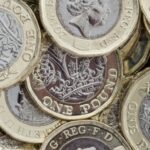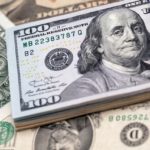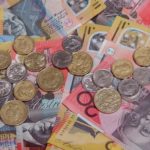Gold retained daily gains near the highest level in six weeks as fears of a slowing global economy stoked safe-haven demand. Copper rose after Chinas economy growing at the slowest pace since early-2009 sparked hopes for the introduction of more stimulus measures.
Comex gold for delivery in December rose to a six-week high of $1 255.6 per ounce and traded at $1 252.1 at 12:58 GMT, up 0.59% on the day. The metal snapped two days of losses on Monday, settling 0.46% higher at $1 244.7. Prices are up ~1% so far this week.
Gold extended its advance as a cooling Chinese economy refueled fears of slower global growth. The metal posted its first back-to-back weekly gain last week since July after US policy makers voiced their concern that a stalling global economy and a stronger dollar may impede the US economy’s recovery, and kept an overall dovish tone at FOMC’s September meeting.
However, despite the recent ambivalence regarding Fed’s timetable to raise interest rates, long-term sentiment toward gold remained bearish. Policy makers are broadly expected to end Fed’s Quantitative Easing program at their October 28-29 meeting, supported by last week’s upbeat economic data, while an interest rate hike is anticipated to come at some point in 2015.
Meanwhile, the European Central Bank has embarked on a loosening monetary policy, which will weaken the euro and boost the dollar, further dragging on gold.
While St. Louis Fed President James Bullard challenged last week his colleagues to delay the conclusion of Fed’s bond-buying program in order to battle a drop in inflation, Dallas Fed President Richard Fisher said yesterday he continued to be hawkish, but wanted to be “sensible”.
Assets in the SPDR Gold Trust, the biggest bullion-backed ETP and a proxy for investor sentiment towards gold, fell by 1.18% to 751.96 tons on Monday, the lowest since November 2008.
Although the drop in the fund can undermine sentiment in the gold markets, strong physical demand in Asia is expected to provide some support. The world’s second-biggest gold consumer, India, celebrates Dhanteras on Tuesday and Diwali later in the week, while the country’s central bank said it won’t tighten gold import rules further.
Market players now eyed upcoming key economic data from the US in the week, including housing numbers and consumer inflation, for further clues of how the US economy is faring.
Elsewhere on the precious metals market, silver for delivery in December added 1.33% to $17.585 per troy ounce by 12:58 GMT, gaining for a second day, while platinum January futures rose for a third day and stood at $1 276.5, up 0.71%. Palladium for delivery in December added 1.01% to $770.00 an ounce, also its third day of gains.
Copper edges higher
Copper rose on Tuesday amid hopes that slowing economic growth in top consumer China will force the government to introduce additional stimulus measures to avoid a sharper slowdown.
Comex copper for delivery in December rose by 1.20% to $3.0240 per pound by 12:58 GMT, further rebounding from Fridays seven-month low of $2.9515. Prices shifted in a daily range of $3.0355-$2.9745 a pound.
China’s National Bureau of Statistics reported that the Asian economy grew by an annualized 7.3% in the third quarter, the lowest since Q1 2009, compared to 7.5% in the second quarter. Although the reading beat broad analyst expectations for a slowdown to 7.2%, it still sparked expectations the government will introduce additional stimulus measures to spur growth.
On a quarterly basis, the world’s second-biggest economy expanded by a seasonally-adjusted 1.9% from the previous three months, topping analysts’ estimates for 1.8%. Retail sales rose by 11.6% from a year earlier in September, slightly below economists’ consensus forecast for 11.8%.
Another weak point was fixed-asset investment excluding rural households which rose an annualized 16.1% in the first nine months of the year, the slowest since 2001. This trailed projections for 16.3% and the January-August’s growth of 16.5%.
On the bright side, China’s industrial production expanded by 8.0% in September from a year earlier, exceeding analysts’ projections for a 7.5% growth from the preceding month’s 6.9% annualized expansion which was the slowest in more than five years.
Daniel Morgan, an analyst at UBS in Sydney, said for CNBC: “The data looks in line with our central case, which is continued moderation in Chinas growth outlook, but still on an absolute basis, reasonably buoyant.” He added that moderating growth would prompt further government support, which would boost demand for copper.
The Chinese economy has been dragged by a slowdown in its property sector which is a key source of demand for base metals. The national statistics agency reported that total investment in real estate development in the first nine months of 2014 rose by an annualized 12.5%, down 0.7% compared to the first eight months. Investment in residential buildings was up 11.3%, 1.1% lower, and accounted for 68.0% of real estate development investment.
Revenue from property sales marked a decline of 8.9%, and the pace of decrease kept at the same level over the first eight months.





